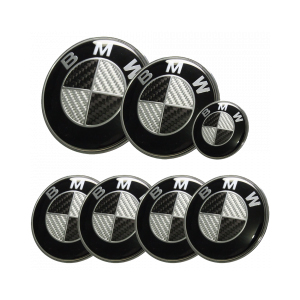Understanding the Importance of Axial Shaft Seals in Mechanical Engineering Applications
Understanding Axial Shaft Seals Importance, Types, and Applications
Introduction
Axial shaft seals are critical components used in various mechanical systems to prevent the leakage of fluids or contaminants along rotating shafts. These seals play a vital role in ensuring the efficiency, reliability, and longevity of machinery by mitigating the risk of wear, corrosion, and premature failure. This article explores the importance of axial shaft seals, their types, and their wide range of applications in different industries.
Importance of Axial Shaft Seals
The primary function of an axial shaft seal is to maintain the integrity of the enclosure surrounding rotating components. In many industrial applications, fluids such as oils, greases, water, and other substances are involved. The improper sealing of these fluids can lead to leakage, contamination, and operational inefficiencies. Axial shaft seals help in
1. Preventing Contamination By effectively sealing the interface between the shaft and housing, these seals prevent the ingress of dirt, dust, or other foreign particles, which could degrade the performance of the machinery.
2. Reducing Lubricant Loss Many systems rely on lubricating fluids to minimize friction. Axial shaft seals ensure that lubricants remain confined within the system, reducing the frequency of maintenance and extending the life of components.
3. Enhancing Efficiency Maintaining the proper lubrication levels and preventing contamination allows machinery to operate more smoothly, improving overall efficiency and productivity.
4. Extending Equipment Life By preventing leaks and contamination, axial shaft seals contribute to the longevity of equipment, reducing downtime and maintenance costs in the long run.
Types of Axial Shaft Seals
Axial shaft seals come in various designs and materials, each suited for specific applications
. Some common types include1. Rubber Seals Made from elastomeric materials, these seals are widely used due to their flexibility and ability to withstand a range of temperatures and pressures. They are commonly found in automotive and industrial applications.
axial shaft seal

2. Mechanical Seals These seals consist of rotating and stationary components that provide a highly effective sealing solution, especially in high-pressure environments such as pumps and compressors. They are designed to handle both axial and radial loads.
3. Lip Seals Often made of rubber or other elastomeric materials, lip seals have a flexible lip that creates a tight seal around the shaft. They are commonly used in rotating equipment like motors and gearboxes.
4. O-Ring Seals Simple yet effective, O-ring seals are circular in shape and are often used in conjunction with grooves designed to hold them in place. They are versatile and can be used in various applications, from plumbing to machinery.
Applications of Axial Shaft Seals
Axial shaft seals are utilized across a wide array of industries, including but not limited to
1. Automotive Industry In vehicles, axial shaft seals are found in engines, transmissions, and differential assemblies, preventing oil leaks and enhancing performance.
2. Manufacturing Many machines, including CNC equipment and industrial pumps, rely on axial shaft seals to maintain lubrication and prevent contamination from entering the system.
3. Aerospace Axial shaft seals are crucial in aerospace applications to ensure that engines and hydraulic systems function reliably under extreme conditions.
4. Food and Beverage Industry In this sector, hygiene is paramount. Seals made from FDA-compliant materials are used to prevent leakage and contamination in processing equipment.
Conclusion
In summary, axial shaft seals play an indispensable role in the functionality and reliability of mechanical systems across various industries. By preventing leaks and contamination, they not only protect equipment and enhance efficiency but also significantly reduce maintenance costs. Understanding the types of seals available and their specific applications is crucial for engineers and technicians to make informed decisions that ensure optimal performance and longevity of machinery. As technology continues to evolve, the development of advanced materials and sealing solutions will further enhance the effectiveness of axial shaft seals in protecting valuable mechanical systems.
-
Understanding the Front Main Engine Seal: Purpose, Maintenance, and Installation
News Jul.29,2025
-
Understanding O-Rings and Seal Rings: Types, Applications, and Custom Solutions
News Jul.29,2025
-
Understanding Crankshaft Oil Seals: Rear Seals, Pulley Seals, and Their Role in Engine Integrity
News Jul.29,2025
-
The Importance of Front and Rear Crankshaft Seals in Engine Performance and Oil Management
News Jul.29,2025
-
Crank Oil Seals: Functions, Types, and Cost Considerations in Engine Maintenance
News Jul.29,2025
-
A Comprehensive Guide to O-Rings and Seals: Types, Materials, and Global Applications
News Jul.29,2025
-
Mastering Diesel and Performance Engine Maintenance: A Guide to Critical Oil Gaskets
News Jul.28,2025
Products categories















